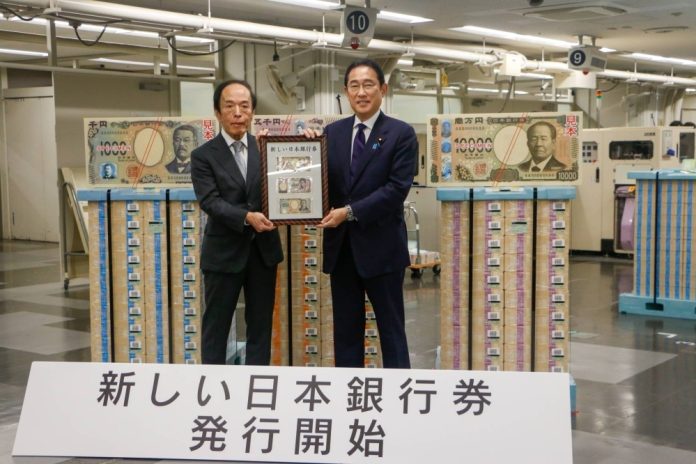Japan has issued its first new yen banknotes in two decades, featuring three-dimensional hologram technology to fight counterfeiting, Japanese media reported.
Japanese Prime Minister Fumio Kishida said on Wednesday that the new design of the 10,000 yen, 5,000 yen and 1,000 yen notes pays tribute to Japanese capitalism, women’s equality and scientific innovation. Kishida told reporters at the Bank of Japan:
I hope the people will like the new bills, and they will help energise the Japanese economy.
The notes feature holograms of historical figures whose orientation changes depending on the angle at which they are viewed, a world first, according to Japanese authorities.
- The 10,000 yen note depicts Eiichi Shibusawa, an industrialist and government official credited with leading Japan’s economic modernisation during the Meiji era.
- The 5,000 yen note depicts Umeko Tsuda, a pioneer of women’s education who founded the predecessor of Tokyo’s Tsuda University.
- The 1,000 yen note features Shibasaburo Kitasato, a bacteriologist who helped develop a method of preventing tetanus and diphtheria.
Japan, known for its heavy reliance on cash, introduced the newly designed notes in 2019, giving consumers and businesses five years to prepare.
Notes already in circulation will continue to be accepted as valid currency.
Bank of Japan Governor Kazuo Ueda said cash will still play an important role despite the country’s shift to digital payments, which lags behind developed countries. Ueda also said:
Cash is a secure means of payment that can be used by anyone, anywhere, and at any time, and it will continue to play a significant role.
The government said it expects to print about 7.5 billion new banknotes by March next year.
Earlier, banknotes with the image of Charles III came into circulation in the UK. The portrait of the monarch appeared on banknotes with denominations of 5, 10, 20 and 50 pounds sterling.
